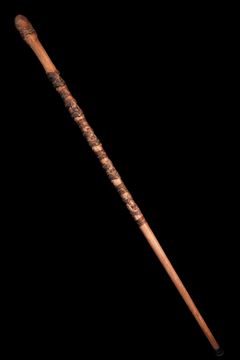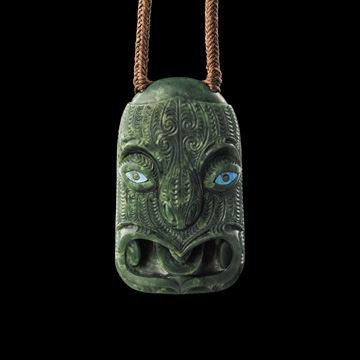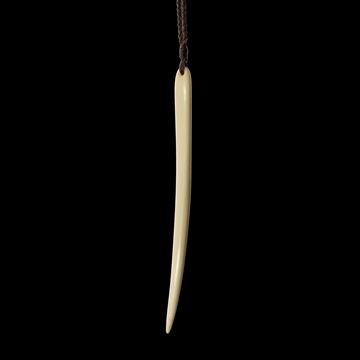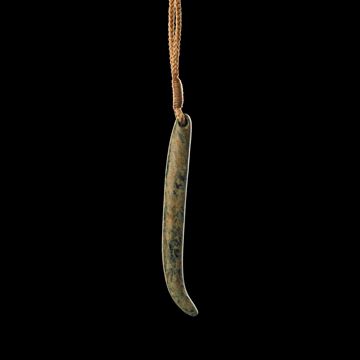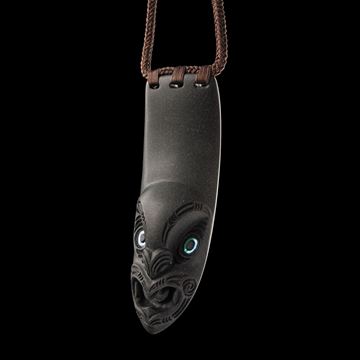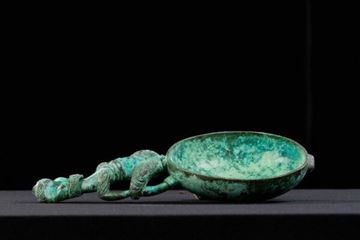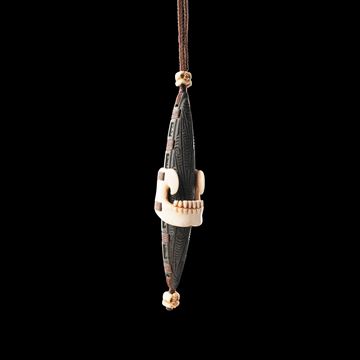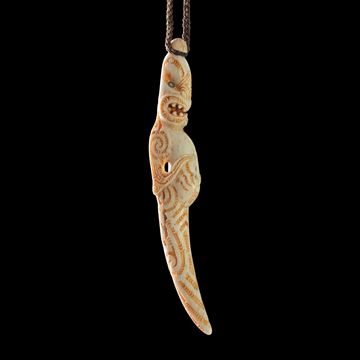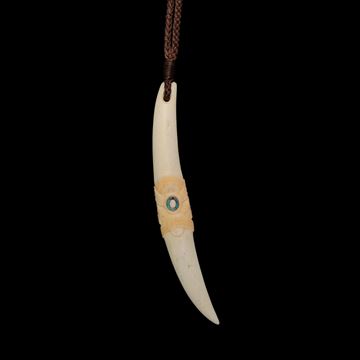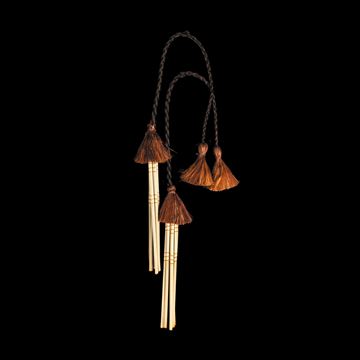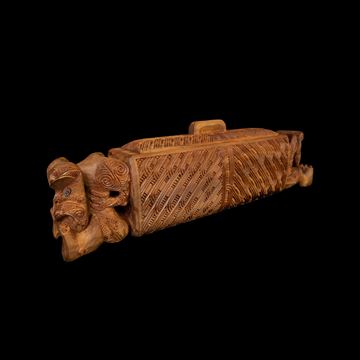
Āhua Gallery
Select Subcategory
Tokotoko - 6853TH
Tokotoko are used when speaking on the marae – by esteemed orators – to indicate the direction of a speaker’s kōrero (speech). They often have the whakapapa (genealogy) of the orator carved into them and these can also be referenced by the orator during his address.
Material: Rātā
Measurements: 1050mm x 45mm x 45mm
$7,990.00
Wheku - 5515IA
In Māori carving there are three predominant designs for heads: the 'wheku' with its long eyes; the 'koruru' with its round eyes; and the 'ruru', which also has round eyes but with a point at the top. The different designs were used by carvers to illustrate the character of the subject they were carving. The long eyes of the wheku were often used to depict a squint or frown.
Material: Kawakawa (NZ Jade)
Measurements: 113mm x 65mm x 22mm
$3,250.00
Autui - 6142HF
Autui were customarily used as a pin for fastening cloaks and may be made from bone, stone, wood or shell. They may also have been worn through the ear as an earring or around the neck as a pendant. Autui are still commonly worn as pendants and earrings and as with most Māori personal adornments, are often passed down generationally.
Material: Koiwi (Beef Bone)
Measurements: 125mm x 10mm x 4mm
$320.00
Autui - 6144HF
Autui were customarily used as a pin for fastening cloaks and may be made from bone, stone, wood or shell. They may also have been worn through the ear as an earring or around the neck as a pendant. Autui are still commonly worn as pendants and earrings and as with most Māori personal adornments, are often passed down generationally.
Material: Koiwi (Beef Bone)
Measurements: 106mm x 9mm
$390.00
Kapeu - 8564HW
Kapeu are slender adornments with a slight bend at the bottom and were often worn as ear pendants. Kapeu were highly prized and a sign of high rank in Māori society. They are commonly also worn as neck pendants. As with many Māori personal adornments kapeu are often passed down generationally.
Material: Pounamu (Kawakawa)
Measurements: 87mm x 22mm x 7mm
$310.00
Rei Puta - 5271IA
The mark of a high Chief was one who wore the Rei Puta (whale tooth pendant), as the teeth of the Sperm Whale were highly prized because of their rarity. With actual whale teeth being such a rarity, it became common to fashion the tooth form from other materials.
Material: Onewa (NZ Greywacke)
Measurements: 137mm x 41mm x 31mm
$1,750.00
Whakakai - 4379TO
Material: Ōnewa (NZ Greywacke) & Koiwi (Beef Bone)
Measurements: 190mm x 35mm x 30mm
$2,090.00
Aurei - 5474MA
Aurei were customarily used as a pin for fastening cloaks and may be made from bone, stone, wood or shell. They may also have been worn through the ear as an earring or around the neck as a pendant. Aurei are still commonly worn as pendants and earrings and as with most Māori personal adornments, are often passed down generationally.
Material: Parāoa (Whalebone)
Measurements: 142mm x 15mm x 23mm
$1,900.00
Aurei Koruru - 5441KH
Aurei were customarily used as a pin for fastening cloaks and may be made from bone, stone, wood or shell. They may also have been worn through the ear as an earring or around the neck as a pendant. Aurei are still commonly worn as pendants and earrings and as with most Māori personal adornments, are often passed down generationally.
Material: Koiwi (Beef Bone)
Measurements: 124mm x 18mm x 10mm
$1,250.00
Poi Piu - 5833RW
Poi piu are simple poi made from the hardened and curled piupiu strands of flax. Poi piu was used as percussion instruments played to the beat of Māori chanting.
Material: Harakeke & Muka
Measurements: 650mm Long
$495.00
Waka Pungarehu - 2579SL
The Waka Pungarehu (Ash Urn) has two carved tekoteko (statues) positioned at the ends of the waka pungarehu which are carved in the traditional style of whakapakoko, resembling preserved corpses. The surface is intricately adorned with the raperape design, symbolizing the continuous cycle of life and the evolution of death. The pakati and haehae techniques are skillfully carved to enhance the entire waka pungarehu, with the distinctive pakati design known as niho kuri (dog’s teeth) adding a unique touch. The pakati designs feature iroiro (maggots) motifs, symbolizing the natural process of
decomposition when a human body returns to the earth.
Material: Tōtara
Measurements: 450mm x 110mm x 90mm
$10,500.00

